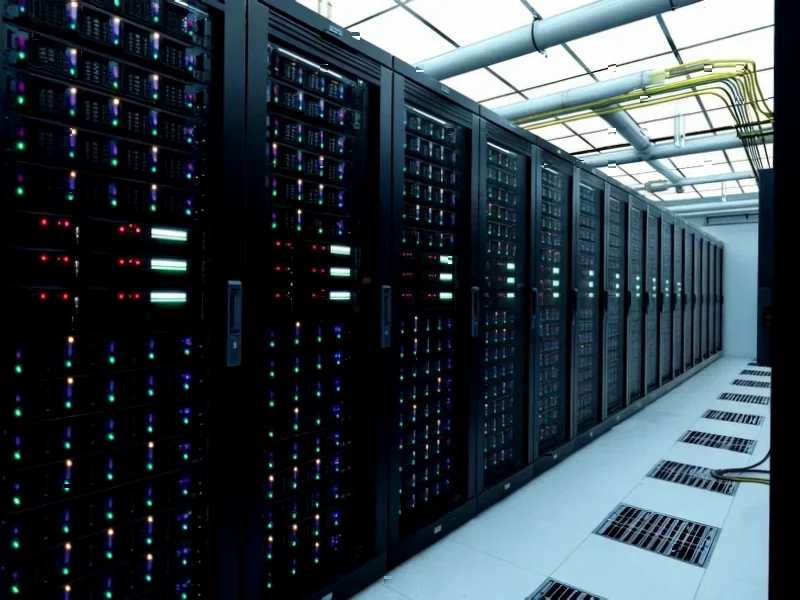According to GSM Arena, OpenAI has announced a strategic partnership with Amazon Web Services that will see the ChatGPT maker run its advanced AI workloads on AWS infrastructure effective immediately. The seven-year deal represents a $38 billion commitment and involves AWS providing OpenAI with Amazon EC2 UltraServers featuring hundreds of thousands of Nvidia GPUs and scaling to tens of millions of CPUs. All capacity under this agreement will be deployed before the end of 2026, with an option to expand further from 2027 onward. The architecture clusters Nvidia GB200 and GB300 GPUs on the same network for low-latency performance across interconnected systems, according to the company’s announcement. This massive infrastructure investment signals a new phase in the AI infrastructure arms race.
The Multi-Cloud Strategy Becomes Reality
This deal represents a fundamental shift from OpenAI’s previous Microsoft-centric approach. While Microsoft remains a critical partner with its Azure infrastructure and substantial investment in OpenAI, this AWS partnership demonstrates that even the closest AI relationships require diversification at scale. For enterprises building their own AI strategies, this validates the multi-cloud approach—no single provider can meet the compute demands of frontier AI models alone. We’re seeing the emergence of what I call “strategic infrastructure pluralism,” where AI companies maintain relationships with multiple cloud providers to ensure capacity, leverage pricing competition, and mitigate vendor lock-in risks.
Nvidia’s Unshakable Position
The specific mention of Nvidia GB200 and GB300 GPUs in this deployment underscores Nvidia’s continued dominance in the AI hardware space. Despite numerous challengers from AMD, Google’s TPUs, and Amazon’s own Trainium and Inferentia chips, when it comes to massive-scale deployments for the most advanced models, companies still default to Nvidia. The clustering architecture described suggests OpenAI is building what amounts to AI supercomputers within AWS data centers, essentially creating dedicated AI factories rather than just renting generic cloud capacity. This represents a new tier of cloud service—not just infrastructure as a service, but AI-optimized supercomputing as a service.
Ripple Effects Across the Ecosystem
The timing and scale of this deal will create significant ripple effects throughout the AI ecosystem. Other AI companies seeking similar scale will face increased competition for GPU capacity, potentially driving up prices and extending lead times for infrastructure deployment. AWS competitors now face pressure to match both the technical capabilities and the commercial terms offered to OpenAI. Meanwhile, enterprises planning their own AI deployments may find themselves competing for resources with OpenAI’s massive footprint. The $38 billion commitment also sets a new benchmark for what constitutes a strategic partnership in the AI era, potentially forcing other cloud providers to offer similarly aggressive terms to retain key AI customers.
The Execution Challenge Ahead
While the announcement is impressive, the real test will be in execution. Deploying hundreds of thousands of GPUs across optimized clusters by 2026 represents one of the largest infrastructure rollouts in technology history. The logistical challenges of procuring, installing, and networking this much specialized hardware cannot be overstated. There are also questions about power and cooling requirements—these GPU clusters will consume massive amounts of energy, potentially straining local power grids and raising environmental concerns. Success will require unprecedented coordination between OpenAI’s technical teams, AWS infrastructure experts, and Nvidia’s supply chain.
Long-Term Market Implications
Looking beyond 2026, this partnership could fundamentally reshape cloud computing economics. If AWS can successfully operate at this scale for OpenAI, it establishes a new premium tier of AI infrastructure services that could become the standard for other frontier AI companies. The option to expand from 2027 suggests both parties anticipate continued exponential growth in AI compute demands. For smaller AI startups, this creates both opportunity and threat—the barrier to competing at scale just got higher, but the proven infrastructure model could eventually trickle down to more accessible offerings. The cloud AI wars have entered a new, more capital-intensive phase where only the best-funded players can compete at the cutting edge.




